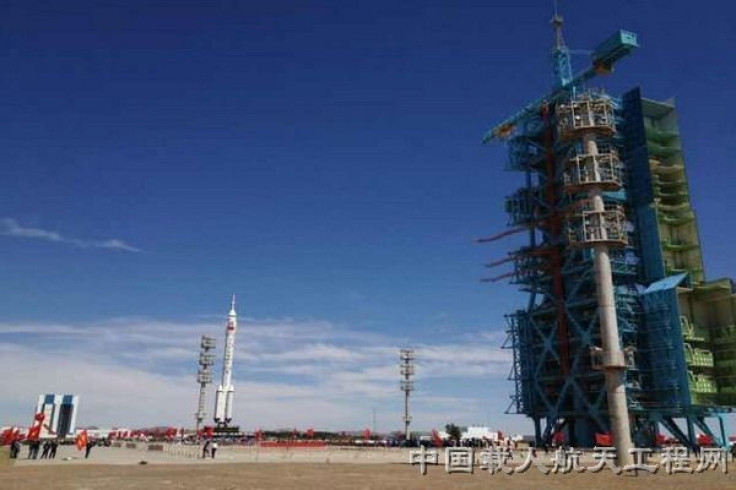China Set To Launch Spacecraft This Month For Manned Space Docking

China is preparing to launch a manned space flight to an orbiting space laboratory in the middle of this month, according to state media reports and China's human spaceflight agency.
A Long March 2F rocket carrying the Shenzhou 9 capsule has been moved to a launch pad in the north-west of the country, and according to state news agency Xinhua, it will carry three astronauts to the mini-space station Tiangong-1, which has been circling Earth unmanned since its launch last year.
The Shenzhou 9 will perform our country's first manned space docking mission with the orbiting Tiangong 1 space lab module, the Xinhua news agency quoted Zhou Jianping, chief designer of China's manned space program, as saying.
According to BBC News, this would be China's fourth manned space flight and its first since 2008. It became only the third country to independently send a man into space in 2003.
It means China's spacecraft will become a genuine manned shuttle tool between space and Earth. It can send human beings to space stations or space labs. This will be a significant step in China's manned space flight history, Zhou said.
A spokesperson told Xinhua news agency that in the next few days, scientists will conduct functional tests on the spacecraft and the rocket, as well as joint tests on selected astronauts, spacecraft, rocket and ground systems.
China completed a difficult space docking maneuver last year, when an unmanned craft docked with the Tiangong 1 or Heavenly Body by remote control. The astronauts onboard the Shenzhou 9 spacecraft will also dock with the Tiangong 1 and carry out scientific experiments on board.
Niu Hongguang, deputy commander-in-chief of the country's manned space program, said in March that the three-person crew might include female astronauts. However, the final selection would be decided on the very last condition, Xinhua reported.
Tiangong 1 space laboratory module meanwhile is a prototype space station designed to test the technologies required for a much larger space station complex currently under development. The Tiangong 1 module is 34 feet long (10.4 meters), 11 feet wide (3.35 m) and weighed about 8.5 metric tons, Space.com reprted.
According to Chinese space officials, the country is developing a larger, 60-ton space station with several modules, slated to be launched in 2020.
© Copyright IBTimes 2024. All rights reserved.












